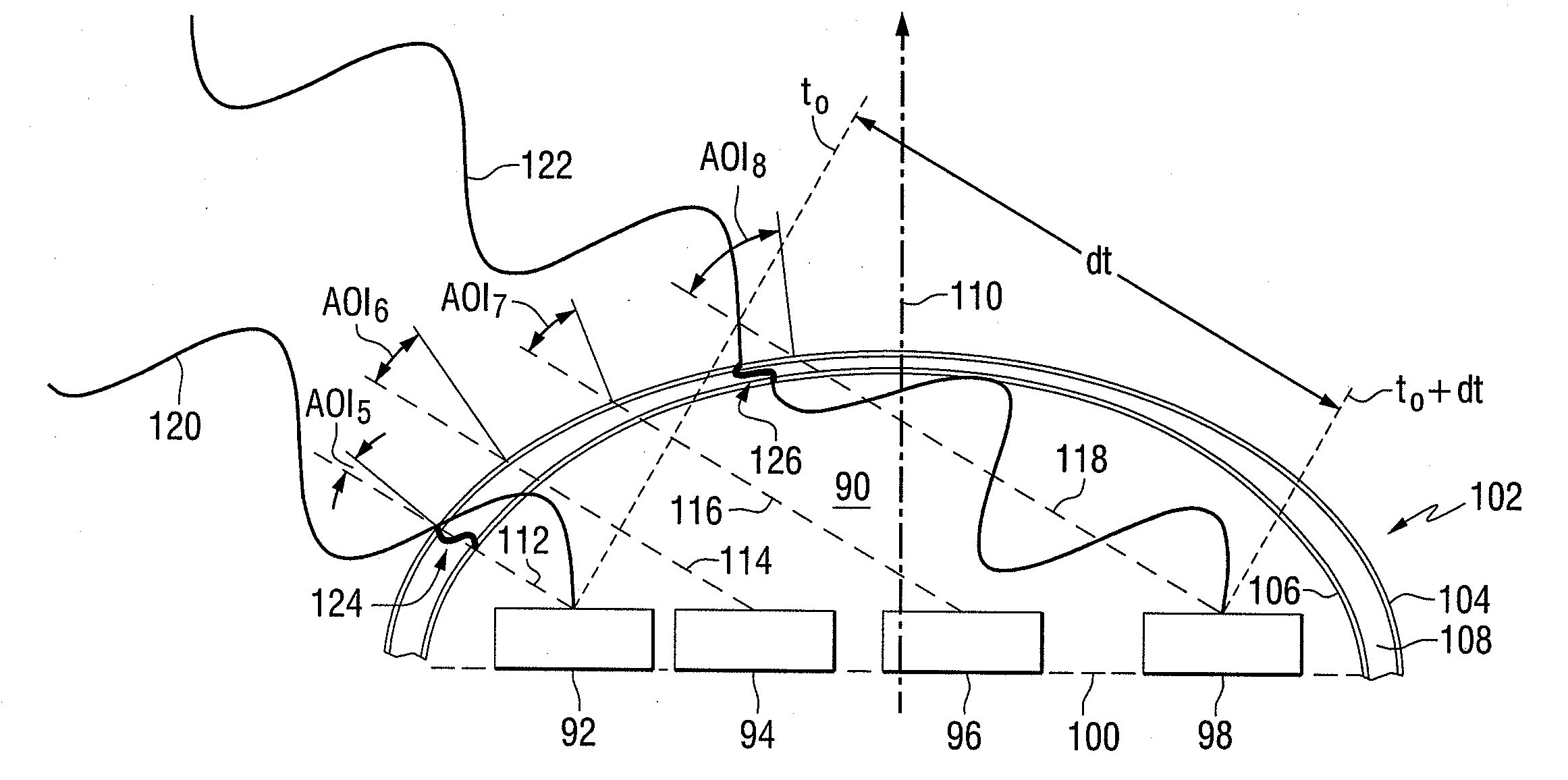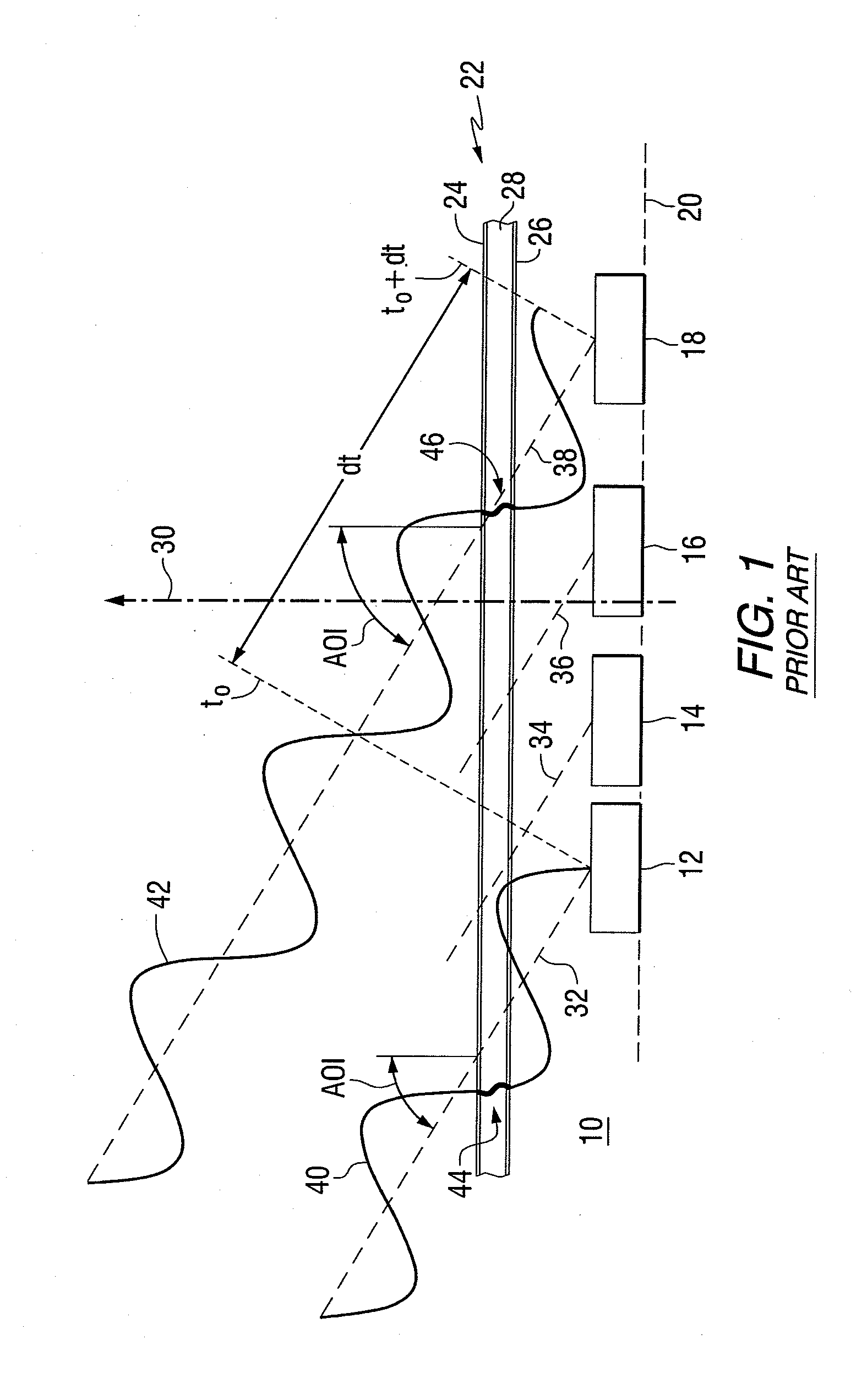Asymmetric Radome For Phased Antenna Arrays
a phased antenna array and asymmetric technology, applied in the direction of antenna details, protective material radiating elements, antennas, etc., can solve the problems of signal phase and power in a non-uniform manner, signal quality and therefore performance of airborne radar systems that use active and passive phased arrays can be marginalized, and errors in resolution and direction are produced
- Summary
- Abstract
- Description
- Claims
- Application Information
AI Technical Summary
Problems solved by technology
Method used
Image
Examples
Embodiment Construction
[0016]Referring to the drawings, FIG. 1 is a cross-sectional view of an antenna array assembly 10 including a plurality of antenna elements 12, 14, 16 and 18 mounted on a common plane 20 and having a flat A-sandwich radome 22. The radome includes an outer layer, or skin, 24 and an inner layer, or skin, 26 positioned on opposite sides of a core layer 28. The skins and core each have a uniform thickness. In common designs, the thin skins are a relatively dense material, such as plastic or laminated fiber reinforced plastic, and the core layer is a thicker low density material, having for example a foam or honeycomb structure.
[0017]Arrow 30 represents the array bore sight direction. In this example, individual rays of a single incoming signal, represented by lines 32, 34, 36 and 38, impinge on the radome at a uniform angle of incidence (AOI). The incoming signal is assumed to have a planar wave front and as such has equal phase at all points on the wave front. Consider, for example, po...
PUM
 Login to View More
Login to View More Abstract
Description
Claims
Application Information
 Login to View More
Login to View More - R&D
- Intellectual Property
- Life Sciences
- Materials
- Tech Scout
- Unparalleled Data Quality
- Higher Quality Content
- 60% Fewer Hallucinations
Browse by: Latest US Patents, China's latest patents, Technical Efficacy Thesaurus, Application Domain, Technology Topic, Popular Technical Reports.
© 2025 PatSnap. All rights reserved.Legal|Privacy policy|Modern Slavery Act Transparency Statement|Sitemap|About US| Contact US: help@patsnap.com



